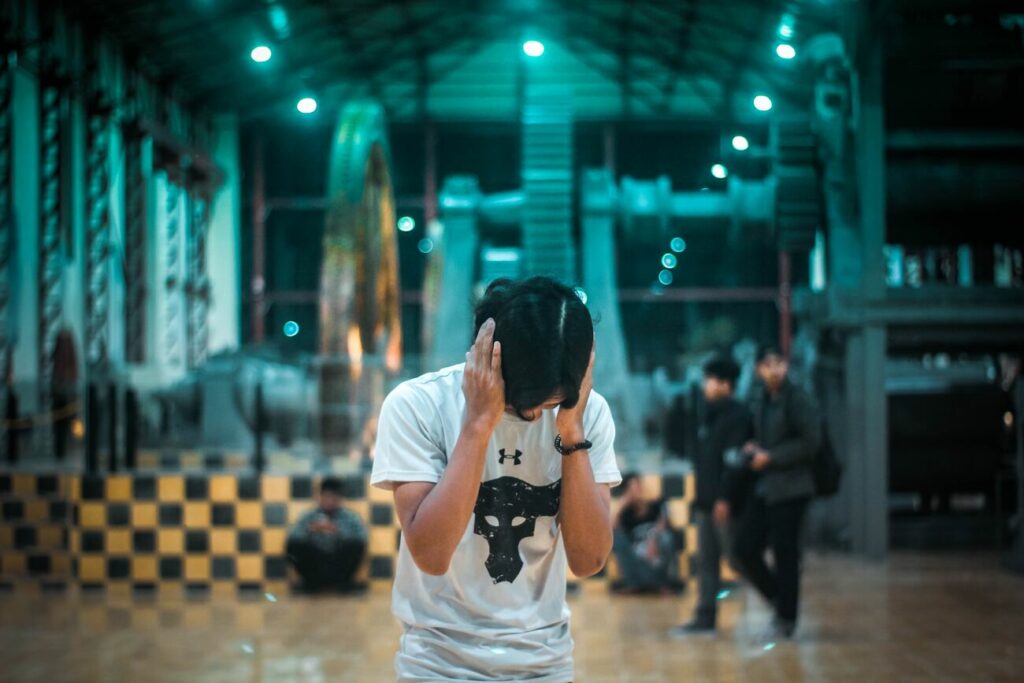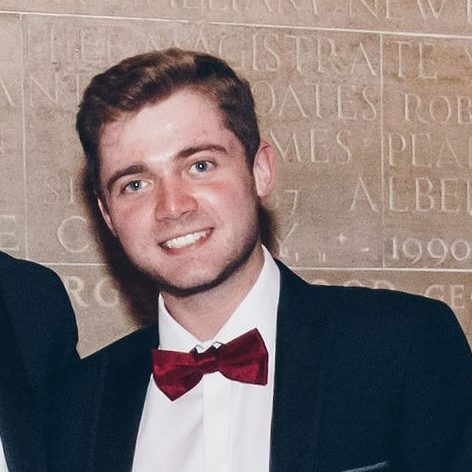This work is part of a series (see my previous reflection: The Cliches of Cancer Reflections From My Medical School Rotation) that attempts to show the public, and aspiring medical students, what medical school is like. This one details a medical school psychiatry rotation experience. Together, I hope this series of reflections give insight into a naïve student’s perspective of the NHS and medical school life in the UK.
This piece was exceptionally difficult to write due to its nature, and I urge all readers to reach out and suggest any edits they feel necessary.
I write about my time shadowing doctors and nurses who are trained to help people challenged by mental illness. As always, I anonymise and withhold lots of details not only for confidentiality, but also out of respect.
Before the consultation
I stand, waiting to enter a mental health ward. All doors are locked, there are tall fences lining the perimeter, and the cord of my personal safety alarm dangles from a trouser loop. I quickly follow the Psychiatrist (Royal College of Psychiatrists What is a Psychiatrist) as the door in front buzzes open. Behaving like a fare-dodging commuter, I’m so eager not to be left that I almost trip over my supervisor’s feet. I’ve no idea what to expect, but I figured sticking close to somebody who knew how to work their alarm would be smart. (Moments later, someone told me how to use it!)
Whilst we walk through the hospital, we’re greeted by other staff in the corridors. One member leaves their office to divulge the details of their long weekend off with us. And, more curiously, to find out whether the Consultant’s recent time off was equally as exciting. They deny, reporting “a quiet one”. But, the smirk and the glances exchanged between the two reassured me that it was anything but. I’d be lying if I said I didn’t spend the next 5 minutes guessing the Consultant’s weekend antics. (It wasn’t the right time of year for Ibiza or Magaluf… I never did ask, though.)
Entering the room
I am told we are walking towards a meeting room. Mindfulness posters adorn the corridor walls, and the floors are carpeted – so not cold. The place is clean. Neither a whiff of poo nor vomit lingers in the air (often the norm for medical wards)! We step through another set of locked doors and I hear a radio playing, and patients are perched on chairs around the room. One more set of locked doors, and we take our seats. Doors, doors, doors.
This was the room where the doctor meets with each patient. The heavy chairs have an awkward shape. They have no handles so are difficult to grasp or lift, preventing their transformation into aerial weapons. Instead, I have to awkwardly push and drag them into position. The patient, doctor, nurses, and I commune around a largish table. I was anticipating violence. Why else would I have been given an emergency alarm? I was pleasantly surprised, though. It was uneventful.
That day we met with a handful of patients. We discussed things like requests for temporary leave, ongoing symptoms, and today’s general news. Despite what the media had led me to believe, Psychiatrist’s don’t spend their time listening to patients sprawled over couches, nor do they solely ask, “and how does that make you feel?”. I did feel, however, that frustration themed most conversations. But why wouldn’t it? Almost all the patients I saw had been in hospital for months.
Experiences of mental illness
I was intently listening as one patient shared their story with me. It was filled with many lows, almost no highs, and – in their words – “would make a shit book”. I was half-expecting there to be a punchline. I was desperately awaiting a plot twist where everything works out. But they mocked me instead,
“Do you always have such sad eyes?”
I hadn’t intended for my empathy to come across as pity. I apologised, and they laughed. Though, we did – reluctantly – return once more to the topic of my “globular eyeballs”. I realised it wasn’t a facial expression that they didn’t like. It was just my face. Nevertheless, they shared their story.
They shared with me their constant feeling of being watched, of being unsafe in their own home. The elephant in the room was that this patient also had hallucinations. They could hear voices. The patient didn’t want to share what they said, but our conservation felt jarred sometimes by what they were hearing. At times, I felt the mood become stormier, and I would periodically glance downwards to check my personal alarm was still in place. I was inexperienced at judging risk.

The patient described the voices further, like having earphones playing music constantly, lyrics that you can’t turn down – even in conversation. Except, the lyrics are terrifyingly personal, scary, and – worst of all – removing the earphones doesn’t stop the music.
Looking back, I realise this person handled difficult conversations with humour. (Albeit, at my expense.)
An experience of the seclusion room
Like all other illnesses, mental health problems can occur with different severities. Some people in mental health hospitals find their symptoms much more distressing than others.
Another experience I recall is an out-of-hours shift where I shadowed a doctor. They received a call for a seclusion review. (This is where a patient is at high risk of injuring themselves or other patients, so are kept safe in an isolated “seclusion” room. They benefit from around-the-clock supervision. Their health is checked every few hours by doctors too, hence our arrival.)
This place did not smell fresh; a heavy stench of faeces carried through the air.
Team assembly, room cleaning, and drug administration
The patient towered well over 6-foot tall, their shoulders wide and their nose against the window panel of the door. They were huffing with rage, their pupils fixated, and they made their presence known. The tension in the air was palpable. I watched as a group of staff assembled outside the door. One of the staff members thanked the Lord when, finally, a member of the team who was “actually taller than 5 foot” arrived. I quietly sighed in relief – I too had compared the stature of the patient to the team’s. I subtly made sure I still had my alarm to hand as if it would magically prevent physical violence in a 2-mile radius. Then, they opened the door.
The team were admirable in how they handled and de-escalated the situation. The room was cleaned in just minutes. The patient was washed, medicated and redressed. It was quick, tactful, yet respectful.
A close encounter
Now, it was the doctor’s turn to do their bit. We didn’t enter the room. Rather, we used a window and hatch in the door. The window was at the height of their face, and the hatch below it opened at shoulder-level.
I noticed the patient now seemed less tense. There was still a haze over their eyes, and they were unable to speak more than just a word at a time. They communicated the basics: “yes”, “no”, preferences for food. Then, without provocation, the atmosphere became tense. They turned their head towards me, eyes burning in my direction. I had no words to say. No reassurance. Nothing to de-escalate. I stayed silent.
They lunged for me. They shot their arm out of the hatch, towards my direction, fingers splayed, heading for my neck.
Yet, strangulation was avoided that day. As a precautionary measure, I stood far back enough from the door’s hatch. That saved my life, not my alarm. The patient’s hand stopped just short of my jugular vein before they slowly withdrew. Despite the room being cleaned of faeces, the smell lingered. And – not to be crude – I did wonder if maybe now it was me.
In conclusion
I returned to this hospital a couple of years later. The nature of the curriculum means we repeat topics and specialities in order to develop our knowledge. Upon my return, little had changed. The fences and locked doors remain, and there are some familiar faces. Although, I recognise in myself a new sense of confidence – I’m no longer rushing through doors in fear of segregation. Although not afraid of conversation before, I felt like I’d grown as a clinician and was now able to take better histories. I was calmer.
It’s lunch and I’m sitting down in the canteen on hospital grounds. The food is sloppy, a type of aubergine dish is falling through my fork as I play with it. I’m convinced it has got to be healthy, because why else would anyone eat this? A familiar voice orders food from the counter before joining me at the table. It was the patient I’d spoken to a couple years back. I don’t think they recognised me (my operation to make my eyes less… spherical was postponed), but they greeted me anyway. It was pleasant and we had a great chat. They were still in hospital but seemed to be doing really well.

The elephant remained too, of course. But it joined us quietly this time. Returning to their analogy of uncontrollable earphones, perhaps the patient’s music was still playing. It was just less aggressive, better managed. I felt less sheepish; I didn’t check that my alarm was in-place every 2-seconds. We all sat round the table pretending to enjoy the hospital food.
All of us: me, the patient, and their hallucinations.
